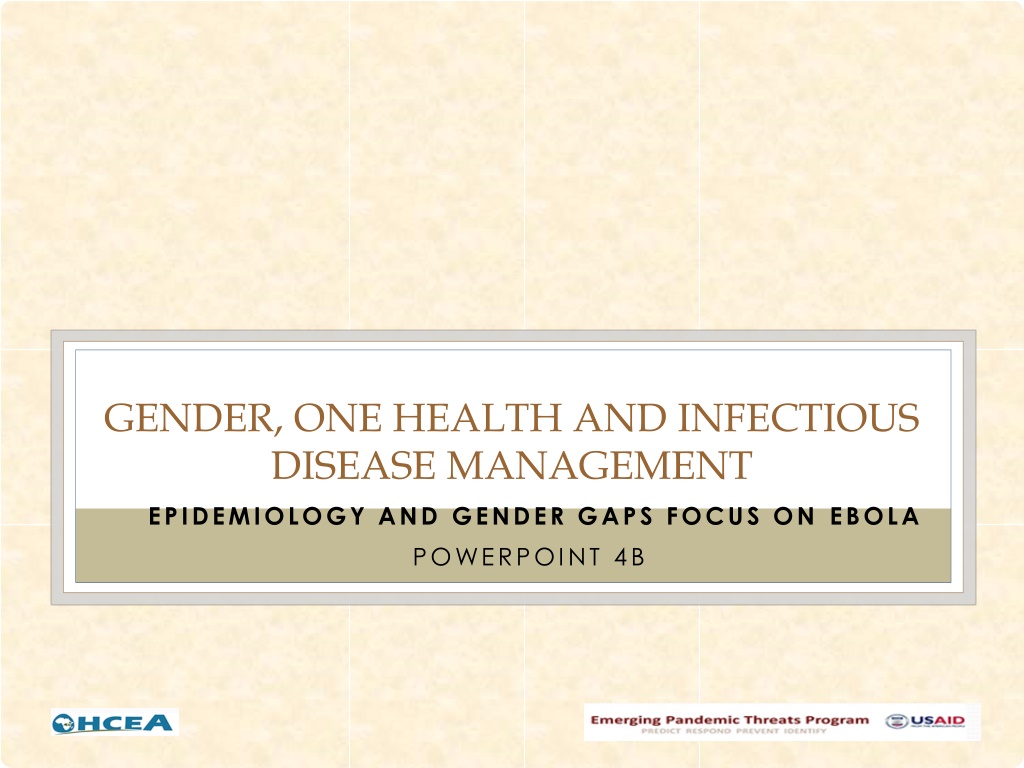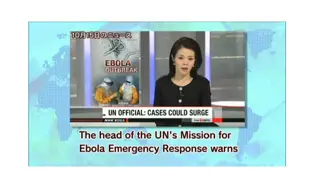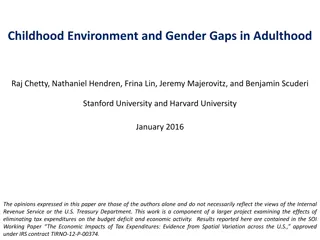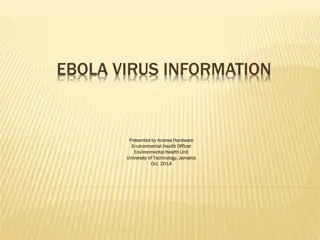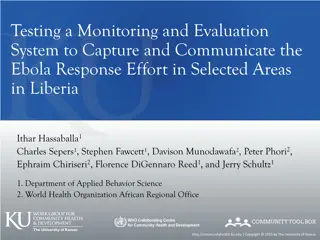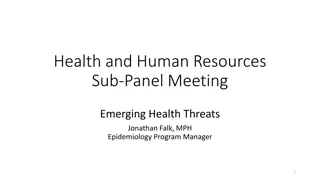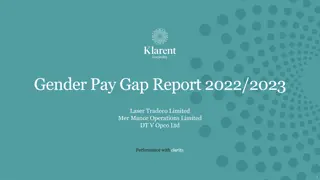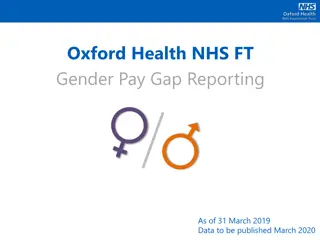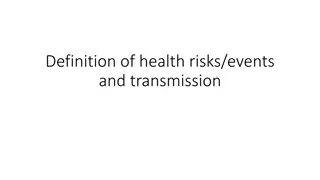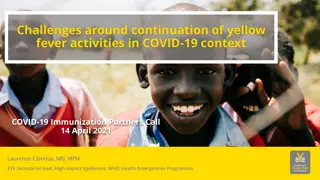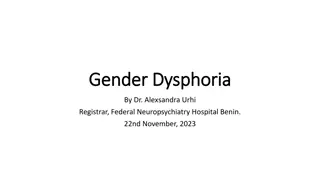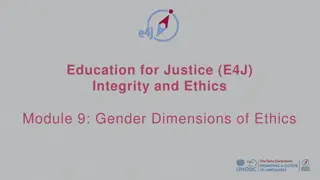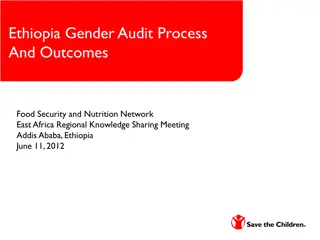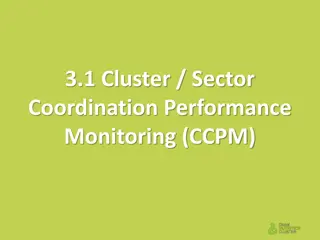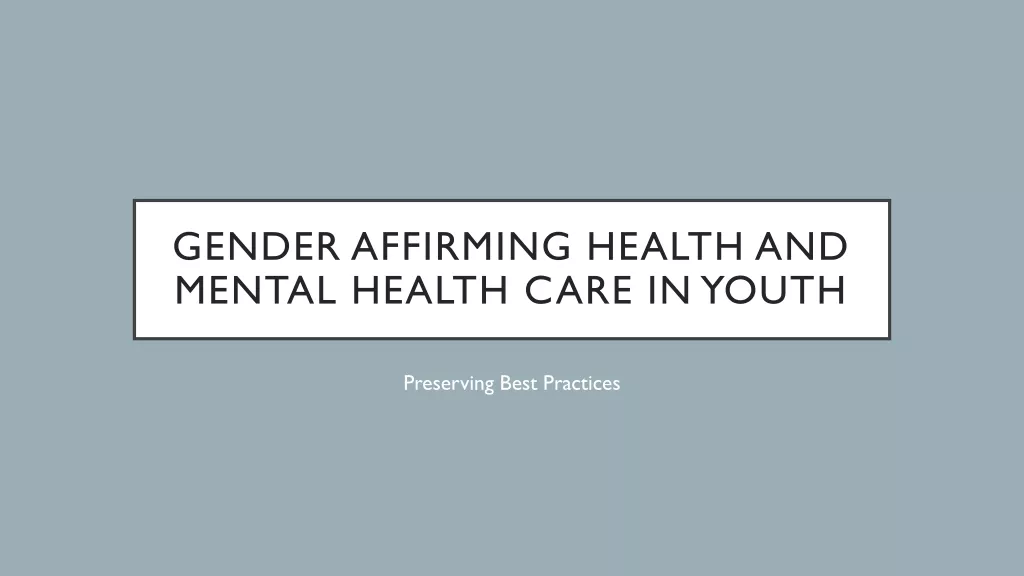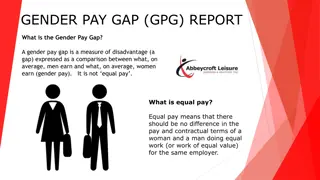Gender Dimensions in Ebola Epidemics: Epidemiology and Gender Gaps
This presentation focuses on the gender dimensions in the epidemiology of infectious diseases, with a special emphasis on Ebola outbreaks. It highlights the 1995 Ebola outbreak in DRC, transmission modes, differences in exposure rates between men and women, and the impact on health care workers. The content underscores the importance of identifying and addressing gender disparities in disease management and outbreak responses.
Download Presentation

Please find below an Image/Link to download the presentation.
The content on the website is provided AS IS for your information and personal use only. It may not be sold, licensed, or shared on other websites without obtaining consent from the author. Download presentation by click this link. If you encounter any issues during the download, it is possible that the publisher has removed the file from their server.
E N D
Presentation Transcript
GENDER, ONE HEALTH AND INFECTIOUS DISEASE MANAGEMENT EPIDEMIOLOGY AND GENDER GAPS FOCUS ON EBOLA POWERPOINT 4B
INTRODUCTION Learning objective To enable participants identify gender dimensions in the epidemiology of disease epidemics, with a special focus to Ebola.
1995 EBOLA OUTBREAK IN DRC Ebola is one of the deadliest viruses in the world. In April of 1995, it re-emerged in DRC, infecting hundreds of people. It left a total of 245 people infected with 80% of the victims dead. The virus infection is very rare. Ebola infection causes Ebola hemorrhagic fever (EHF). The disease literally liquefies internal organs, causing massive internal and external hemorrhages. It is so terrifying because so little is known about the disease. The 1995 outbreak was the fourth world outbreak, the first one occurred in 1976.
THE EPIDEMIOLOGY OF EBOLA Ebola is transmitted to people both by animal-to-human contact and human-to-human contact. Human-to-human contact is through infected organs, or through bodily secretions. Contact with infected dead or sick primates is a common way in which EHF is initially introduced into human populations (index cases). After introduction into the human population, common transmission is by:
THE EPIDEMIOLOGY OF EBOLA (CONTINUED) Spread by contact with: Infected, dead or sick primates; Family members while caring for infected relatives; Dead bodies while preparing them for burial. Amplified in: Hospitals and health centers (with spread to health care workers and to other patients); and Other health care settings including traditional healers and midwives.
DIFFERENCES IN EXPOSURE, INFECTION RATES AND MORTALITY BETWEEN MEN AND WOMEN The index cases in several outbreaks have been shown to have had contact with forest animals. This suggests that men, who are more likely than women to go regularly into the forest for hunting are the first contacts. This is as a consequence of their gendered roles. However, as an EHF outbreak progresses, women infection rates are often higher than those of men.
HEALTH CARE WORKERS AND EHF Many of the larger epidemics of EHF were amplified in health care settings. Leading to a relatively high proportion of health care workers being affected. Nursing staff generally tend to be the health care workers who come in direct contact with patients in the greatest numbers. Because nurses in almost every country tend to be predominantly female, their occupational exposure can be considered a gender related exposure.
THE IMPACT OF EHF ON THE LIVES OF MALE AND FEMALE SURVIVORS Because of the fear engendered by outbreaks of EHF, many survivors experience difficulties in reintegrating into their families and the community after recovery. There is stigmatization. Women report stigmatization somewhat more frequently than men. EHF also affected sexual life. If it is a woman affected, very few men are able to wait for an undetermined period of time of recovery.
IMPLICATIONS FOR SURVEILLANCE AND RESPONSE TO EHF Differences in exposure between males and females have been shown to be important factors in transmission of EHF. Therefore, it is important to understand the gender roles and responsibilities that affect exposure in the local area. Comparison of epidemic curves for men and women can provide information on changes in gender patterns of transmission more quickly and in more detail than the cumulative rates that are now in more general use.
IMPLICATIONS FOR SURVEILLANCE AND RESPONSE TO EHF (CONTINUED) Gender experts should be included in surveillance teams to elucidate gender roles and their impact on transmission. During outbreaks, it is important that women who care for the sick outside health care settings are informed about how to protect themselves from EHF. During the most recent outbreak in the Congo, in October 2003, health education meetings targeting women and how they can protect themselves while caring for the sick were found to be extremely useful in halting transmission.
IMPLICATIONS FOR SURVEILLANCE AND RESPONSE TO EHF (CONTINUED) The introduction of barrier-nursing methods (coupled with contact tracing and isolation of patients) has been key to ending EHF outbreaks in several settings. Provide nurses with better training in infection control and to empower them to initiate protective measures. Surveillance of complications of pregnancy suggestive of EHF and of deaths in maternity clinics is important for contact tracing, particularly at the beginning of an outbreak.
